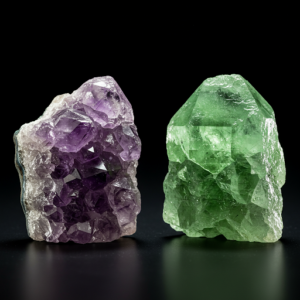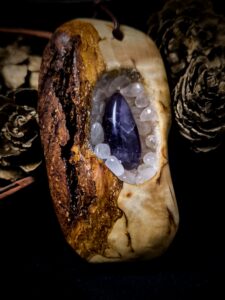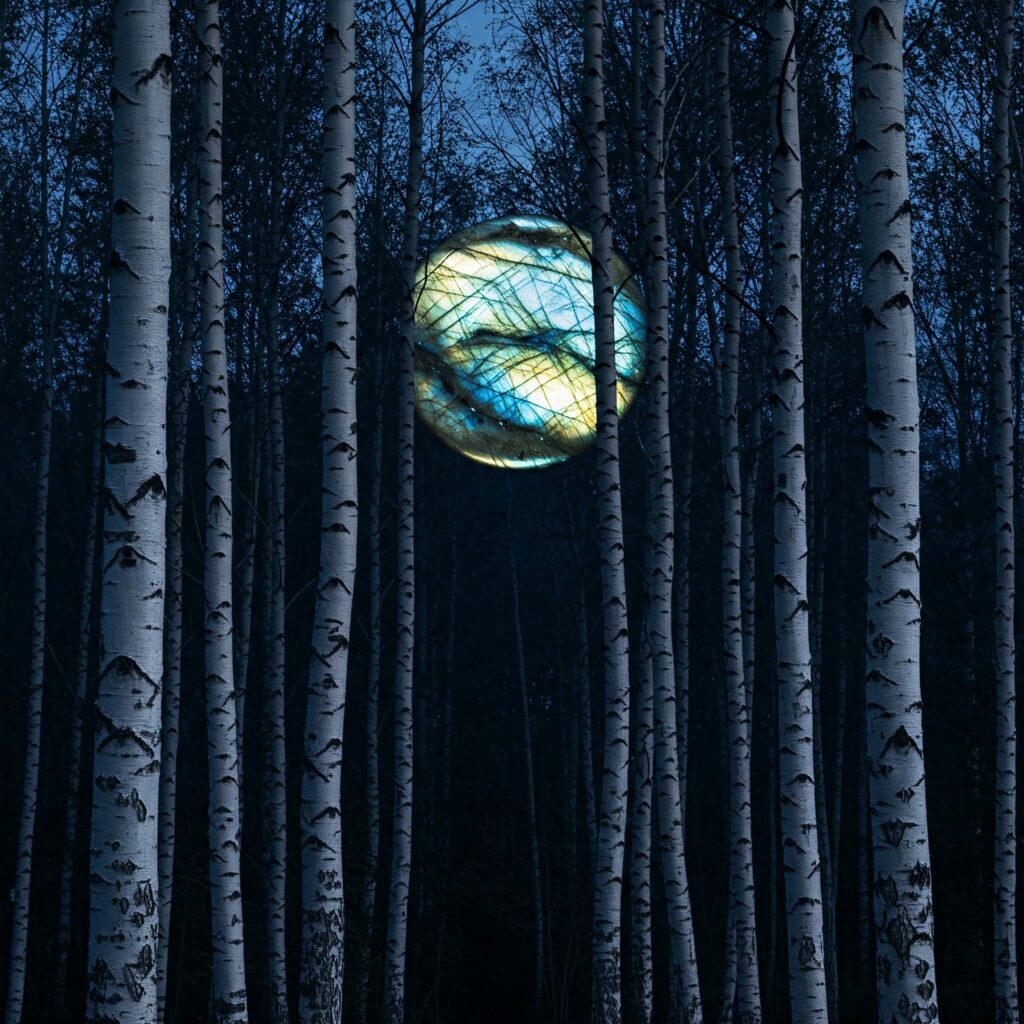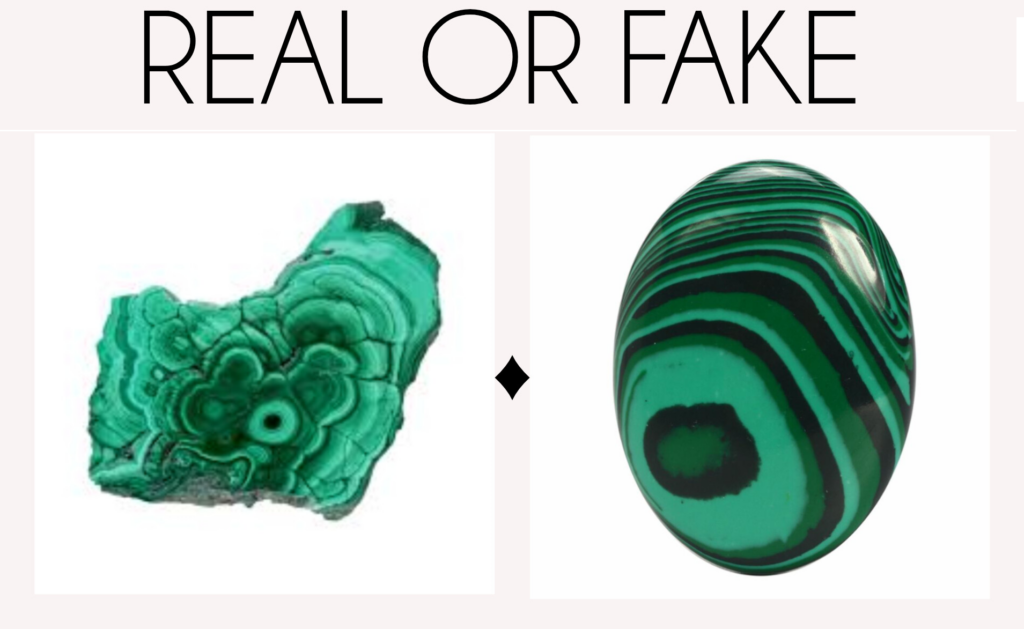Amethyst, the February birthstone and a beloved gemstone for centuries, is celebrated for its captivating purple color. As the purple variety of the quartz mineral species, it’s often the first gem that comes to mind when one thinks of this regal hue. However, the color of amethyst is far from being a singular shade. It spans a fascinating spectrum, influenced by various factors, resulting in a diverse range of purple tones and even some surprising variations.
The Core Color: Purple in Many Shades
At its heart, amethyst is a purple gemstone. This purple can manifest in a wide array of intensities and undertones. According to the analyzed articles, the color spectrum of amethyst includes:
Light Lavender or Lilac:
These are the palest expressions of amethyst’s purple, sometimes referred to as “Rose de France” amethyst, exuding a delicate elegance.

Mauve:
A slightly more saturated and often softer purple.
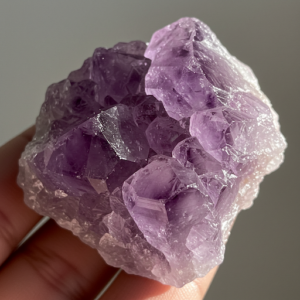
Violet:
A classic purple hue, often described as a true or medium purple.
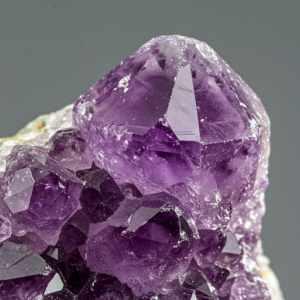
Deep Purple:
This is the color most traditionally associated with amethyst, often described as rich, intense, and even royal.
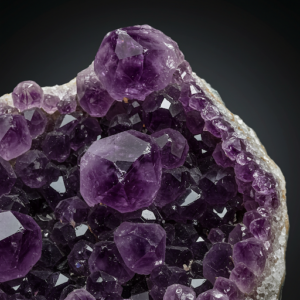
Reddish Purple:
Some amethyst exhibits a secondary reddish undertone, sometimes referred to as “raspberry.”
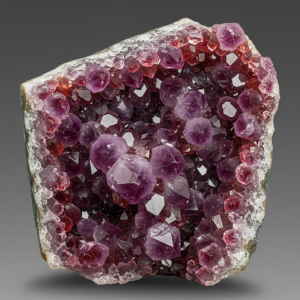
Bluish Purple:
Conversely, other amethyst can lean towards a cooler, more bluish shade of purple.
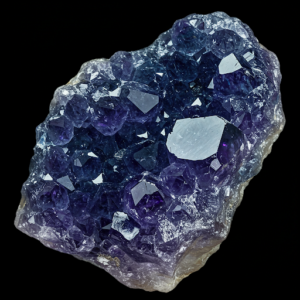
Factors Influencing Amethyst Color
The beautiful array of purple hues in amethyst is primarily attributed to the presence of iron impurities within its crystal quartz structure. When this iron is exposed to natural irradiation and heat during the gem’s formation, it causes the development of the purple color. The intensity of the purple is generally linked to the amount of iron present and the level of irradiation.
Beyond the basic purple, other factors can lead to color variations and unique types of amethyst:
- Color Zoning: Amethyst often displays color zoning, characterized by angular bands or layers of darker and lighter purple within the same crystal. This can appear as “soap scum,” “tiger stripes,” or “zebra stripes.”
- Inclusions: The presence of other minerals within the quartz structure can influence the overall appearance. For example, the inclusion of Hematite can lead to the formation of Pink Amethyst, which ranges from soft lilac to deep pink and even peachy tones. Auralite-23, also known as Canadian Amethyst, also exhibits reddish edges or spots due to Hematite.
- Heat Treatment: While natural amethyst owes its color to natural processes, heat treatment can significantly alter its color. When heated to temperatures between 300 and 500 degrees Celsius, amethyst typically loses its purple color and can turn yellow, orange, brown, or even colorless. This heat-treated yellow or brownish quartz is often marketed as Citrine (though natural Citrine exists). Partially heating amethyst can even result in Ametrine, a gemstone that displays both purple (amethyst) and yellow (citrine) colors in the same stone.
- Natural Variations: Different geographical locations are known for producing amethyst with specific color characteristics. For instance, “Siberian” amethyst is a term used to describe high-quality amethyst with a deep, intense purple color. Mines in Africa are known for producing deep purple stones, often in smaller sizes, while Australia is renowned for some of the darkest varieties.
Beyond Purple: Other Amethyst Varieties
While purple is the defining color of amethyst, there are other recognized varieties that showcase different hues or combinations:
Cape Amethyst (Chevron Amethyst):
This type features distinct bands of purple and white quartz arranged in a chevron or V-like pattern.
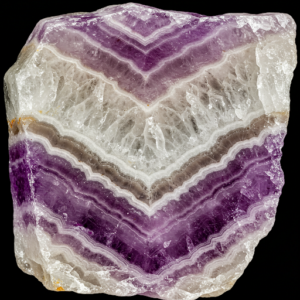
Mossy Amethyst:
This variety contains inclusions that give it a moss-like or dendritic appearance.
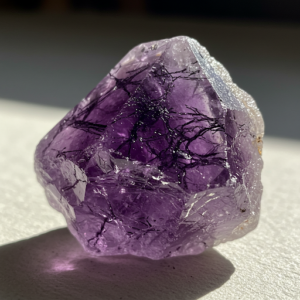
Prasiolite (Green Amethyst):
This is a green variety of quartz, sometimes formed by heating amethyst under specific conditions or occurring naturally.
